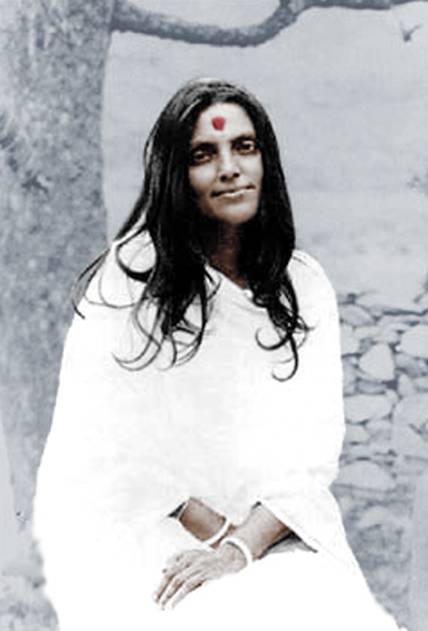Peace and harmony appear so closely woven in every cell of her being that the spirits of darkness would search in vain for a loophole.
–Melita Maschmann, Encountering Bliss: My Journey through India with Ānandamayī Mā
My PhD was in the area of Religion and Society, sociology religion and social ethics, at the Graduate Theological Union in Berkeley. Previously, as Master’s student at the Maryknoll School of Theology, I studied with Venezuelan sociologist Otto Maduro, who had written a sociology of Latin American religion employing ideas from Pierre Bourdieu. It was an exhilarating study which made sense of that part of the Catholic Church that had been making a preferential option for the poor.
Over the last several years, I’ve read several works on the life and influence of the Bengali spiritual force, Sri Anandamayi Ma. I was delighted to read a new book by Orianne Aymard, who employs theorists like Bourdieu, Jurgen Habermas, and Max Weber to make sense of how a community and institution continue after the death of the charismatic leader. Her title reveals the stakes of this inquiry: When a Goddess Dies: Worshipping Ma Anandamayi after Her Death (Oxford University Press, 2014). The author investigate topics like the postmortem cult of the guru, the significance of relics, the meanings of the guru’s death, dreams and visions of the guru after death, and the future of the cult, given the struggle over the monopoly of religious power.
________________________
Dr. Aymard interviewed devotees, both Indian and Western, old-timers and new enthusiasts, and I found fascinating what they had to say about her. Here is a small sample:
“I don’t feel she has gone from this world. She is everywhere. Ma is here and there. She is watching everything, every aspect of our life.” [128]
“Ma is my friend, philosopher, guide, everything. I am sitting on her lap. Why would I want anybody else?” [157]
“I saw many people who followed Ma in a bit of an addicted way, as psychological dependence and she had to respond. That becomes complicated.” [171]
“My aim is to achieve Ma or God. The only important thing for me is to live always in the presence of Ma.” [191]
“Ma was such an extraordinary being and her life is quite amazing. Only a very small amount has been translated.” [205]
“Ma was Pakistani actually, not Indian.” [232]
________________________
When a Goddess Dies is an impressive, sophisticated theoretical work. Yet there is a small, subtle thread of something here that transcends academic research and objective tone. In her acknowledgments, I read the following:
“If this book is a great intellectual adventure, it is also much more. Its birth took place on a hospital bed in Dehra Dun, in Northern India. While in a critical medical state, I promised myself to write on Mā Ānandamayi (Mā), if I came through the crisis. Having made this promise, I had no other choice but to persevere until I published. This book, then, is a real liberation and represents a true victory of life over death.” [ix]
Her last two acknowledgments:
“In memoriam, Swami Vijayānanda, the greatest magician I have ever met, for teaching me the ‘Gai Savoir,’ the path of Joy, and for caring after me in certainly the most critical moment of my life.
And finally, the Supreme Divine Mother, to Mā Ānandamayī, without whom none of this would be possible.” [xi]
In her conclusion, the last page has a photo of the author with Swami Vijayānanda, dated January 2010.
Dear Dr. Aymard, some academics will truly appreciate your knowledge and insight on the scholarly questions animating your research. Even as I am aware of your evident modesty, I encourage you to consider writing a personal account of the stories that are behind these brief affirmations in the opening of your book. Many more people in various walks of life could benefit from your testimony about the central place of these two radiant figures in your life.
